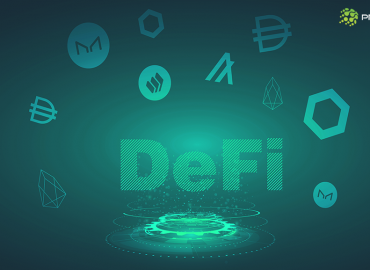Staking, like a lot of things in crypto, can be a complicated concept for some, while for others, it may be a simple concept, as it highly depends on how much understanding you already have and how much more you would love to unlock. But most of the time, for investors and traders, staking means getting extra rewards or gains just for holding that crypto asset.
Defi staking is a practice in which a user stakes his crypto assets to act as a validator for transactions while earning a profit. Defi staking has quickly become one of the most talked-about topics in the Defi market. By staking their coins, cryptocurrency owners can make passive income.
What is Defi Staking?
Defi staking is a powerful combination of Decentralized finance and staking. Thus, it focuses on staking cryptocurrency assets to become a validator on a layer-1 blockchain or a DeFi protocol.
Furthermore, in exchange for staking crypto assets, users receive rewards for the amount they have staked in the form of crypto assets. It should be noted that staking crypto assets means locking fungible or non-fungible tokens into smart contracts. And that, at a broader level, it refers to all types of DeFi activities that involve a temporary commitment of crypto assets.
Different Types of DeFi Staking
Now let’s have a much deeper overview of what staking is, and then we will also discuss two main types of DeFi staking.
Staking
At its most basic, the staking process refers to users locking a specific number of crypto assets to become validators in a Proof-of-Stake (PoS) blockchain network, which is also a straightforward method. Furthermore, PoS relies on validators who have a vested interest in the given chain. Validators who put their assets on the line are more likely to do their jobs right so they don’t lose some or all of their stake.
PoW mechanisms, on the other hand, need computing power to verify transactions, which uses energy and increases the carbon footprint.
Needless to say, staking rewards encourage validators to create and validate blocks even more. There are numerous PoS blockchains, e.g., Polkadot, Algorand, Solana, Cardano, etc. However, even Ethereum, the most well-known programmable blockchain, is transitioning from PoW to PoS. (Ethereum 2.0).
For example, to become a validator on Eth2’s Beacon Chain, you must deposit 32 ETH, which is a sizable sum. As a result, the majority of individual investors are priced out of staking opportunities. Also, the main aim behind this type of high requirement for staking is to prevent the network from being 51% attacked.
But it is clear that the straightforward/direct method is way harder to pursue, so here comes the role of staking service providers who have emerged in the market to solve this issue. They are the ones who allow users to band together with other crypto investors to raise the staking capital.
So, with the help of staking service providers, users can deposit any amount of tokens into a staking pool and begin earning passive income based on how much of the pool’s total holdings their deposited crypto assets make up.
Yield Farming
While lending and borrowing platforms were the first significant use cases for decentralized finance, the introduction of yield farming demonstrated DeFi’s true power. The real power of yield farming is in the way people move crypto assets between different DeFi staking platforms to get the most out of their investments.
Users essentially make their assets available to a lending protocol or a liquidity pool in exchange for passive income in the form of interest and a percentage of the revenue generated by their preferred platform. They can easily move their money to other pools and platforms with better rates of return, though.
Investing in various assets to maximize your earning potential or hedging against unexpected risks is, a key investing strategy in traditional financial markets as well.
On the other hand, DeFi staking, on the other hand, enables never-before-seen flexibility, as the combination of 24/7 market access, smart-contract-driven automation, and the lack of intermediaries enables investors to switch between multiple DeFi protocols with little to no downtime. Such adaptability provides numerous opportunities for developing various DeFi staking strategies.
Liquidity Mining
Liquidity mining is a subcategory of yield farming in which crypto assets are provided to liquidity pools. These pools are critical for enabling trading without intermediaries on the auto market maker (AMM) decentralized crypto exchanges (DEX).
A typical liquidity pool consists of the two assets that comprise a specific trading pair, such as ETH/DAI. It uses an algorithm to make sure that the values of two assets are always the same.
This means that the pool adjusts the prices of the assets dynamically to account for any changes in their respective values as a result of trades. In our ETH/DAI example, purchasing ETH would reduce the amount of ETH in the pool while increasing the amount of DAI. To compensate, the pool raises the price of ETH relative to DAI.
This entire system is developed around liquidity providers who make their assets available to liquidity pools. There are various ways to compensate liquidity providers, including a percentage of the fees collected by the pool.
Some DeFi staking platforms offer their tokens as part of their reward programs. Thus, DeFi protocols require robust reward programmes to make staking economically viable for liquidity providers.
What is a DeFi Staking platform?
Many users of centralized staking platforms are curious about what a DeFi staking platform is and how the entire mechanism works. DeFi staking is another way to profit from your cryptocurrency assets by utilizing the benefits provided by the decentralized finance platform.
The theory of staking in a centralized and decentralized environment can differ. In the past, people thought that staking was a way to get paid for approving transactions and adding a new block to the blockchain.
On the other hand, at a broader level, DeFi staking is often used for rewards by locking the crypto assets on the DeFi staking platform. DeFi platforms play a key role here by ensuring that the users who want to lock their crypto assets can exchange them with other users. Thus, DeFi platforms act as a solid common point for the temporary exchange of crypto assets.
Benefits of DeFi Staking
There are various benefits of DeFi staking. We have divided the benefits into three main parts: stakers, staking platforms, and blockchain networks. Let’s go through each one of them one by one.
Advantages for Stakers:
- Staking provides an alternate way to generate passive income.
- Stakers usually pay low entry fees.
- Getting started is usually quite simple.
- When interest rates are higher, the rewards are usually higher than expected.
- Sophisticated smart contracts protect the secrecy of stakeholders.
The Advantages of Staking Platforms:
- The liquidity on the platform increases.
- The platform can provide lucrative services to its users.
- There is an increase in the revenue of stakeholders and networks.
Benefits of Blockchain Networks:
- Blockchain provides security for your sensible and crucial data.
- Blockchain provides greater transparency to its users.
In addition to the above advantages, staking also plays a vital role in adding speed and efficiency to blockchain projects. Now you will surely ask how?
By staking some of your crypto assets, you increase the blockchain’s ability to process transactions and make it more resistant to attacks.
Disadvantages of DeFi Staking
While DeFi staking has some significant advantages over traditional investing, there are some drawbacks too. The main one is the so-called “impermanent loss,” which occurs during the liquidity mining process.
Impermanent loss
Because algorithms that change the prices of assets in a liquidity pool only care about keeping the values of the assets in the pool in balance, the same tokens can have different values inside and outside of a liquidity pool.
As a result, withdrawing your tokens from a pool is a loss; thus, reward programmes were introduced to compensate liquidity providers for their efforts.
Lock-in period
Staking necessitates a lock-in period during which your cryptocurrency funds are locked and cannot be moved or transferred for that particular time period.
Thus, it becomes essential that prior to staking, you must do some research on specific staking requirements and regulations.
Staking
Final Thought
The disadvantages mentioned above reflect the fact that DeFi is still a novel concept that needs to be developed and fleshed out. There are still some issues to work out, especially given that blockchain technology, in general, is still in its early stages.
Nonetheless, even at this early stage, DeFi staking has demonstrated great promise and may provide a viable alternative to traditional investing. As industry trends indicate a surge in POS blockchains, DeFi staking has a bright future. The creation of DeFi staking platforms or the addition of DeFi staking to existing blockchain-based platforms could bring in cryptocurrency users from all over the world.
Going with the technological adoption of blockchain is not enough; you need a catalyst to enhance your digital transformation. So you can utilize multiple blockchains by taking advantage of Defi Staking Platform Development services.



